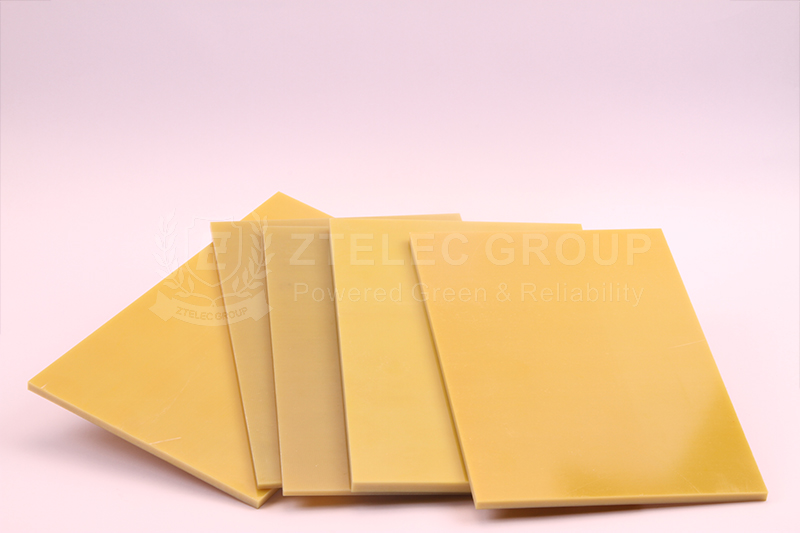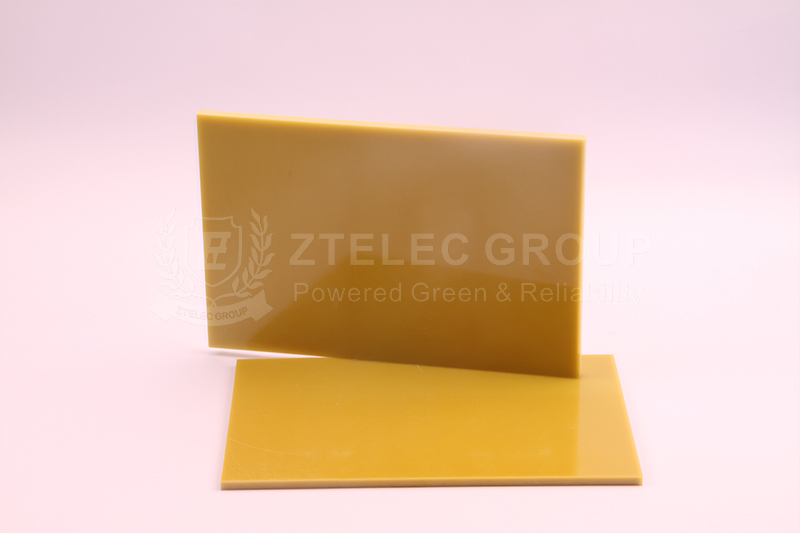In the field of manufacturing and application of electrical equipment, the performance of insulation materials is crucial, especially its heat resistance directly affects the safety and stability of the equipment. As a commonly used insulation material, the temperature resistance grade of 3240 fiberglass sheet has attracted much attention. So, what is the temperature resistance grade of 3240 fiberglass sheet? In practical applications, how to choose suitable high temperature insulation materials?

3240 epoxy resin insulation sheet occupies an important position in the field of electrical insulation due to its excellent heat resistance. From the perspective of heat resistance grade classification, it belongs to Class B insulation material, which means that its long-term allowable operating temperature can reach 130℃. In this temperature range, 3240 fiberglass sheet can always maintain stable physical and chemical properties, and there will be no obvious attenuation in both mechanical strength and electrical insulation performance. Take the motor as an example. During continuous operation, a lot of heat will be generated inside. 3240 fiberglass sheet can effectively withstand this heat, ensure the long-term stable operation of the motor, and avoid failures caused by insulation failure.
However, once the temperature exceeds its tolerance range, the performance of 3240 fiberglass sheet will gradually deteriorate. High temperature will cause thermal expansion of the insulation board, thereby reducing its dimensional stability and weakening its mechanical strength. At the same time, its electrical insulation performance will also be affected, greatly increasing safety hazards such as leakage. Despite this, compared with ordinary insulation materials, 3240 fiberglass sheet can still maintain relatively good performance at higher temperatures. Therefore, it is suitable for a variety of electrical insulation scenarios that have certain requirements for heat resistance. In a suitable temperature environment, it can reliably play key roles such as insulation and support.
FR4 fiberglass sheet is also a Class B insulation material with a temperature resistance of 130°C. It not only has excellent insulation and dielectric properties, but also has excellent flame retardant properties. For this reason, FR4 fiber sheet is often used in the manufacture of products with extremely high requirements for electronic insulation performance, such as insulation components of rail transportation equipment such as high-speed railways and motor vehicles.
The temperature resistance of G11 fiber sheet is even higher, reaching Class F, that is, 155°C. This material has outstanding thermal stress resistance, extremely low water absorption, and excellent mechanical properties. In the production and manufacturing of high-voltage switchgear, high-end electrical appliances and electronic products, G11 fiberglass sheet has become an ideal choice for ensuring stable operation of equipment under complex working conditions due to its excellent performance.

General selection: According to the actual working temperature of the equipment, accurately match the material with the corresponding temperature resistance grade. For example, for equipment with an operating temperature requirement of 155℃, F-class insulation materials can be selected; for equipment with a temperature resistance requirement of 180℃, H-class materials are more suitable; and C-class materials are suitable for high-temperature environments above 180℃.
Extreme high temperature scenarios: In extremely high-temperature working environments such as high-voltage motors, polyimide (PI) materials are an excellent choice due to their temperature resistance of more than 300℃. It can effectively resist the damage of high temperature to insulation performance.
When the equipment is in a humid environment, such as textile factories, it is crucial to choose materials with excellent moisture-proof performance. Materials such as moisture-proof insulation paper and polyester film can effectively avoid the degradation of insulation performance caused by moisture and ensure the safe operation of the equipment.
In environments with severe chemical corrosion, such as chemical plants, it is key to give priority to corrosion-resistant materials. Materials with excellent chemical corrosion resistance, such as polyimide film, can maintain stable insulation performance for a long time in harsh chemical environments, thus extending the service life of the equipment.
Low-voltage equipment: For low-voltage equipment such as 380V motors, Class A (105℃) or Class E (120℃) insulation materials can meet basic insulation requirements. This type of insulation material can ensure the normal operation of the equipment and control costs.
High-voltage equipment: To ensure insulation reliability under high voltage, high-voltage equipment must use Class B (130℃) and above insulation materials to prevent dangerous situations such as insulation breakdown.
Flexibility requirements: In application scenarios where winding is required, materials with good flexibility such as soft insulating varnished cloth can facilitate construction operations while ensuring insulation effects.
Strength requirements: For parts that are affected by equipment vibration and electromagnetic forces, glass fiber reinforced materials can effectively resist external forces and ensure the stability of the equipment structure due to their high strength characteristics.
High-performance materials such as polyimide have high initial procurement costs. However, in the long-term use process, such materials have energy-saving advantages and are also easy to maintain. These advantages can gradually offset the initial investment, and in the long run, they are more cost-effective.
General-purpose materials such as polyphenylene sulfide (PPS) are relatively low-cost. They are suitable for large-scale production. In scenarios where performance requirements are not particularly stringent, general-purpose materials are an affordable choice.
If you need our products please write down any questions, we will reply as soon as possible.
There are three ISO certificates for quality certification. The certificates will be shown later. ISO
After receiving the advance payment, the production cycle is 15-25 days. And the transportation cycle should be calcul……
We supply with installation guide and user manual for each transformer. If you do not understand them. We will offer v……